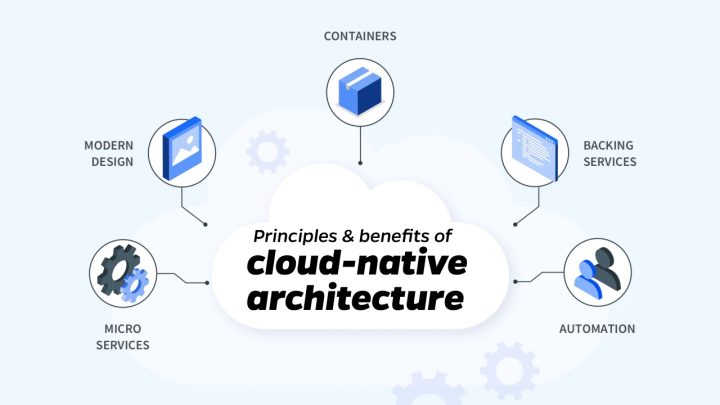Cloud-native architecture is an approach to building and deploying applications that takes full advantage of cloud computing capabilities. It is characterized by a set of principles and practices that enable scalability, resilience, and agility in the cloud environment. Here are some key principles and benefits of cloud-native architecture:
Microservices: Cloud-native architecture favours the use of Microservices, where an application is broken down into smaller, loosely coupled services that can be developed, deployed, and scaled independently. This approach allows for better modularity, easier maintenance, and faster development cycles.
Containerization: Containers, such as Docker, are used to package applications and their dependencies into isolated units. They provide consistency and portability across different environments, making it easier to deploy and manage applications at scale.
DevOps and Automation: Cloud-native architecture encourages the adoption of DevOps practices, emphasizing collaboration and automation between development and operations teams. Continuous integration and deployment (CI/CD) pipelines enable faster and more reliable software releases.
Scalability and Elasticity: Cloud-native applications are designed to scale horizontally, meaning they can handle increased load by adding more instances of services. With auto-scaling capabilities offered by cloud platforms, applications can dynamically adjust their resource usage based on demand, ensuring optimal performance and cost efficiency.
Resilience and Fault Tolerance: Cloud-native architecture promotes the design of applications with resilience in mind. Services are designed to be fault-tolerant, meaning they can handle failures without causing widespread disruptions. Techniques like load balancing, circuit breakers, and automated fault recovery are commonly employed.
Infrastructure as Code: Infrastructure provisioning and configuration are managed programmatically using infrastructure as code (IaC) tools like Terra-form or Cloud-Formation. This approach allows for reproducibility, consistency, and scalability when setting up and managing cloud resources.

Benefits of cloud-native architecture include:
Scalability: Applications can easily scale up or down based on demand, allowing businesses to handle fluctuations in user traffic efficiently.
Agility: Cloud-native architecture enables faster development cycles, continuous delivery, and quicker response to market changes, facilitating innovation and business growth.
Cost Optimization: By leveraging cloud resources effectively and utilizing auto-scaling capabilities, businesses can optimize costs by paying for the resources they actually need.
Resilience and High Availability: Applications are designed to be resilient to failures, ensuring high availability and minimizing downtime.
Improved Developer Experience: Developers can focus on building features and functionality without worrying about the underlying infrastructure, thanks to the automation and self-service nature of cloud-native architecture.
Overall, cloud-native architecture empowers organizations to leverage the full potential of cloud computing, enabling them to build scalable, resilient, and agile applications that can meet the demands of modern business environments.
